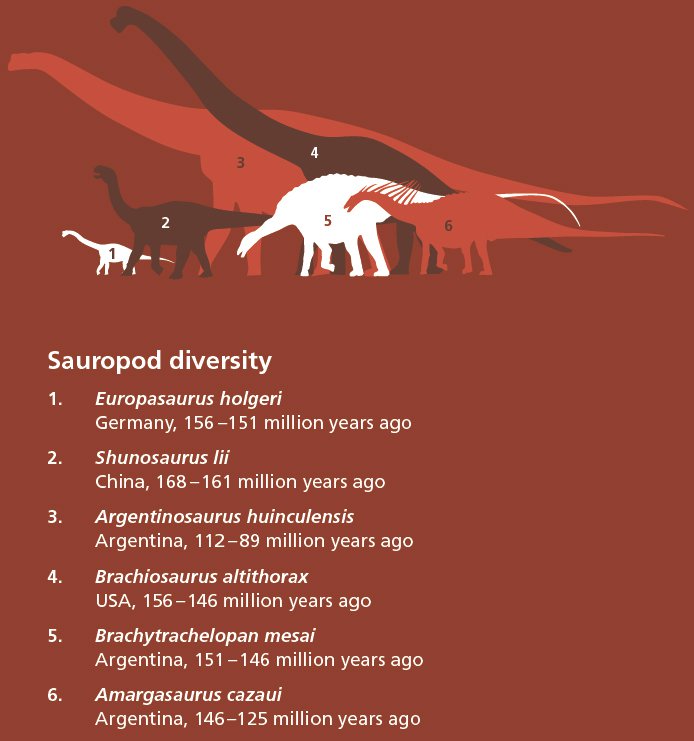Herbivorous heavyweights
On this page...
One group of plant-eaters grew to become the biggest land animals ever. These were the sauropods - impressive long-necked, four-legged giants. However, the group has since expanded to include dwarf forms (eg Magyarosaurus); forms with relatively short necks (eg Brachytrachelopan); forms with sails (eg Amargasaurus); forms with armour (eg most members of the Saltasauridae); and even forms with clubbed tails (eg Shunosaurus). Membership is no longer just about size.
Despite this, it is the ‘super heavyweight’ status of some sauropods that continues to captivate us. Why did some species grow so big?
The suggestions include:
- A stable and warm climate resulted in an abundance of plants.
- The abundance of plants meant sauropods could eat large amounts of food and so sustain a large body size.
- A massive gut was required to break down tough plant material. A big body was needed to support this gut.
- Being big is a useful adaptation. Adult sauropods were a challenge for predators.
- A large body could maintain a constant body temperature.
Did you know?
Titanosaurs are a group of sauropods that include the largest dinosaurs ever, such as Titanosaurus, Argentinosaurus and Paralititan, and the Australian Savannasaurus. They are primarily found in Gondwana.
Sauropod diversity
Some examples of sauropods worldwide include:
- Europasaurus holgeri – Germany, 155–151 million years ago
- Shunosaurus lii – China, 162–157 million years ago
- Brachytrachelopan mesai – Argentina, 156–146 million years ago
- Brachiosaurus altithorax – USA, 151–146 million years ago
- Amargasaurus cazaui – Argentina, 130–125 million years ago
- Argentinosaurus huinculensis – Argentina, 100–89 million years ago

Diagram showing 6 different sauropods.
Image: illustration© Australian Museum
New evidence shows that there were ‘dwarf’ sauropods. Europasaurus holgeri grew to only six metres long. It lived in Germany when this area was a series of small islands. Smaller was better when restricted to small island spaces.
An example of an Australian sauropod is Rhoetosaurus brownei - found in Roma, Queensland, Middle Jurassic, 172–168 million years ago. The leg bones of Rhoetosaurus were adapted to carry a huge body weight. Rhoetosaurus is one of only a few sauropod species discovered in Australia.

